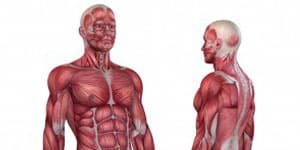In rowing, anthropometric dimensions are strongly correlated to performance. Anthropometric analysis is usually carried out as one-dimensional studies – this summary concentrates on a 3D anthropometric analysis.
 Schranz et al. (2012) aimed to determine if using the new 3D whole body scanning combined with conventional measuring would predict junior rowing performance better than the conventional measuring alone. Additionally, their goal was to find out which measures are the best for predicting junior performance.
Schranz et al. (2012) aimed to determine if using the new 3D whole body scanning combined with conventional measuring would predict junior rowing performance better than the conventional measuring alone. Additionally, their goal was to find out which measures are the best for predicting junior performance.
Previous anthropometric analysis data and best 2000 m ergometer time were available for 500 junior rowers (257 females, 243 males, all aged less than 20 years). 41 predictors were measured during conventional and 79 during the new 3D test battery. Partial least squares regression analysis was used to determine the variances.
The results showed that the variance explained by each model was similar for both male [76.1% (new) vs. 73.5% (conventional)] and female [72.3% (new) vs. 68.6% (conventional)] rowers. It was found that 3D measurements predicted performance higher than 1D measurements. It was also found that for female rowers, leg size was relatively more important than arm, chest and hip size. On the other hand, arm measurements were relatively more important for male rowers than measurements of the leg, chest and hip.
In general, the measured whole body surface area and volume were the strongest predictors of rowing ergometer performance for both male and female junior rowers. However, the predicted whole body surface area (based on conventional measuring) stands in top five of the most important predictors of junior rowers’ performance, hence also emphasizing the validity of conventional measuring in these terms.
What to learn from this?
In anthropometric analysis of junior rowers, the body surface area and volume are the strongest predictors of performance. When 3D scanning is not available, conventional measuring can be used to estimate body 3D measures.

Source
Schranz N, Tomkinson G, Olds T, Petkov J, Hahn AG. Is three-dimensional anthropometric analysis as good as traditional anthropometric analysis in predicting junior rowing performance? Journal of Sports Sciences 2012; 30(12): 1241–1248.
